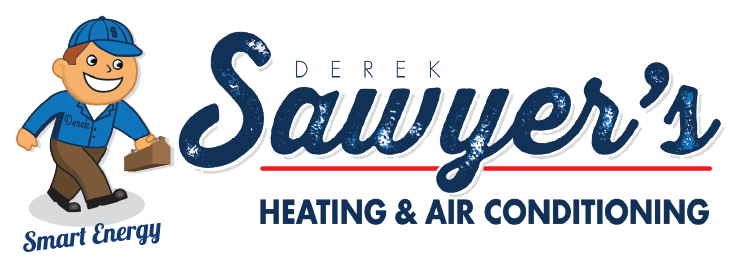Home HVAC systems can only deliver the performance their owners expect when they have clean, intact, well-designed ductwork. If the ducts that run through your home cannot deliver warmed or cooled air efficiently, you may experience everything from chronic health problems to elevated electric bills.
You might not suspect that your air quality woes relate to a duct issue if only because you rarely see or deal with these hidden sections of your HVAC system. Look at four potential problems that can plague your ducts and the measures you can take to alleviate them.
1. Dust
Even the most carefully maintained home will collect a certain amount of dust. In addition to the dust and debris tracked in from outdoors, humans and pets naturally shed hair and skin cells that settle onto surfaces, get kicked up into the air, and eventually get pulled into the HVAC system.
Fortunately, HVAC system vents accommodate air filters that trap much of this debris, removing it from general circulation and cleaning your air. Not so. Fortunately, these air filters have a finite capacity for collecting dust. When they become clogged, the dust settles in the ducts, where it accumulates over time.
Dust accumulation can also develop suddenly if your home undergoes construction or renovation. This work can fill the air with particulate matter, including debris that can trigger allergies or other respiratory issues. This extra burden can overwhelm your air filters’ and ducts’ ability to filter and clean the air.
If your home seems unusually dusty, no matter how often you clean it, check your air filters and replace them as needed. If the problem persists, you may need to have the ducts inspected and cleaned by professionals.
2. Mold
Mold represents a special kind of problem. Like dust, it can enter your home on shoes, clothing, pet fur, or other carried objects. However, unlike dust, this living organism grows and thrives in moisture and environmental conditions amply provided by air conditioning components and processes. The presence of dust only nourishes it further.
Mold commonly grows in receptacles for standing water, such as the evaporator drain pan in your HVAC system. Typically, the drain pan collects condensation and then expels it via a drainage line. If this drainage system fails, mold spores from the drain pan may rise into the air and enter your ducts.
Mold spores can cause numerous health problems as they float through the air and into people’s respiratory systems. If you have a mold problem in your HVAC system, your family may experience allergic reactions, asthma attacks, or other ailments. Other signs of mold include discoloration around vents and a musty smell in the air.
While you can often remove mold around vents, mold infiltrating your ducts or drain pan requires professional evaluation. Your HVAC technicians will either remove the mold themselves or recommend a mold remediation specialist. They can also repair drainage problems that create standing water in your system.
3. Air Leaks
HVAC ducts can direct air through your home in a precise manner because they function as a closed system. Installers seal individual sections of ductwork to ensure no air escapes on its journey through your home. However, the system can lose considerable efficiency if a hole, gap, or other air leak develops.
Duct air leaks can occur for a variety of reasons. For example, rodents can damage ducts as they chew their way into walls, while corrosion allows holes to form. Most commonly, however, simple thermal expansion and contraction over several seasons of use can weaken the seals connecting duct sections and vent registers.
Symptoms of a leaky duct system include uneven heating or cooling and hard-to-manage humidity, indications that cooled or heated air has escaped into the walls instead of circulating through your rooms. In addition, an inexplicable rise in your energy bills may mean that your HVAC system must run harder to compensate for the leakage.
HVAC technicians can check every inch of your ductwork for leaks. They can seal the leaks with metallic mesh tape, restoring your HVAC system’s functionality and energy efficiency.
4. Design Flaws
Sometimes, an HVAC system’s ductwork struggles with efficiency problems from its first operation. Even experienced contractors can make errors in the planning and construction phases, resulting in HVAC ducts that can’t do their job adequately. If your HVAC system has never worked well, suspect this possibility.
Common mistakes in HVAC duct installation include installing too small a system for the home’s needs, running the ducts over too great a distance for efficient operation, and not installing enough return vents to permit good air circulation. Your HVAC expert can recognize these flaws and make any recommended modifications.
If you believe a duct problem has limited your ability to enjoy your HVAC system, contact Derek Sawyer’s Heating & Air Conditioning. Our HVAC experts can evaluate your ductwork and recommend the right action to improve your home’s air quality and energy efficiency.
We offer HVAC maintenance services in the following areas:
- • Modesto AC repair and maintenance
- • Escalon AC repair and maintenance
- • Chico AC repair and maintenance
- • Ceres AC repair and maintenance
- • Atwater AC repair and maintenance
- • Newman AC repair and maintenance
- • Discovery Bay AC repair and maintenance
- • Latrop AC repair and maintenance
- • Gustine AC repair and maintenance
- • Turlock AC repair and maintenance
- • Lodi AC repair and maintenance
- • Elk Grove AC repair and maintenance
- • Los Banos AC repair and maintenance
- • Tracy AC repair and maintenance
- • Stockton AC repair and maintenance
- • Oakdale AC repair and maintenance
- • Manteca AC repair and maintenance
- • Galt AC repair and maintenance
Please leave us a review or learn more about our Modesto AC repair services today!
Not around here? Well, then check out the 5-star Denver heating services our friends offer at Brothers Plumbing Heating Electric!


